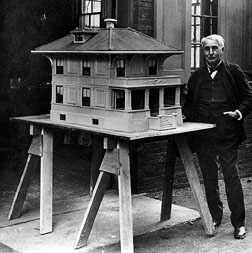I have headlamps, fiber-optic otoscopes, and light bars in all my treatment rooms. You would think that would be enough light–but it’s not.
There are times, say, when I’m at the front desk changing an internal filter on a RIC or doing some other task that requires extra-high visibility. That means I need more light. Sometimes I need a patient’s ear canal held open so I can inspect or clean it. And there are situations in which I need more light—a different type of light. For example, when I’m trying to read the tiny figures in a hearing aid’s serial number, I may need to go to a treatment room to get an otoscope.
Let’s face it. We work in a field where everything is getting tiny: filters, rocker switches, domes, microphone openings/diaphragms, and serial numbers. It is not enough to have good vision. You need to see like Superman.
So I use multiple glasses, a binocular headlamp, fiber-optic reading/work lamps, and other light sources. These are all wonderful and extremely helpful. But they are not enough!
LET’S DISCUSS OTOSCOPES
 I have purchased dozens of Welch Allyn otoscopes that use fiber-optic technology to project light into the ear. In the “standard model,” the light comes out from the end of the head of the otoscope. When inspecting an ear with this model, you attach a tip to the end of the instrument. The ear tips for these standard units come in various sizes, but not in any large sizes.
I have purchased dozens of Welch Allyn otoscopes that use fiber-optic technology to project light into the ear. In the “standard model,” the light comes out from the end of the head of the otoscope. When inspecting an ear with this model, you attach a tip to the end of the instrument. The ear tips for these standard units come in various sizes, but not in any large sizes.
Welch Allyn also makes several other models of otoscopes that have their own unique features. In one unit, the light is not delivered into the head of the otoscope; it is routed to a singular tiny tip. This model, like the standard model, has ear tips that come in a wide range of sizes, but it also includes a huge tip, which is used to hold the ear canal open. The magnifying glass on this scope rotates out of the way in case you need to use an ear spoon to clean the ear. With the magnifying lens out of the way, and with an extremely large ear tip, you can insert surgical instrument into the ear canal.
Welch Allyn also makes another model of otoscope that has no head. It has a small magnifying lens and an excellent light source. This unit is very handy for working inside the ear.
There are dozens of other light sources for examining ears. The most popular of these is the head mirror, which ENT physicians use routinely. They prefer this type of light source to most others.
However, it is surgical microscopes that produce the best light and the best magnification system available for seeing into and working in ears. While these microscopes are costly, the superior vision they provide justifies their high cost.






